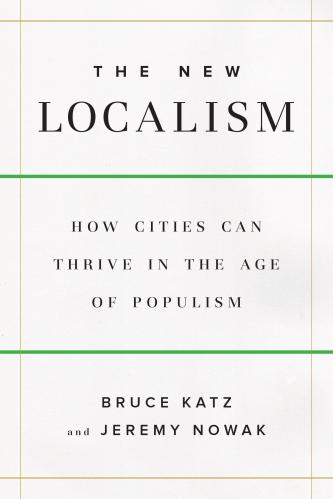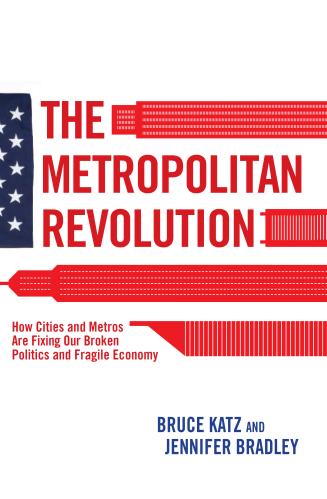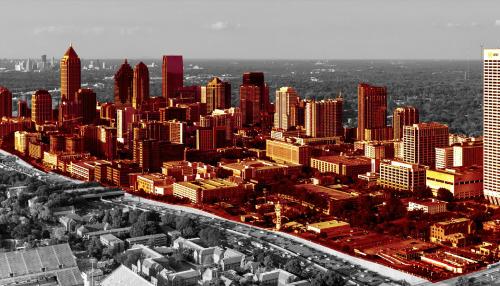This piece first appeared in La Vanguardia on October 29, 2017
Barcelona is the latest European city to find itself at the epicenter of multiple political fervors and fevers: nationalism, secessionism, and populism. Unlike Brexit, Catalonia’s long standing efforts to gain independence from Spain has not been defined by one vote but by growing political hostilities between the national and provincial governments.
The latest moves by the central government to circumscribe regional autonomy and to remove Catalon’s separatist president from power represent an escalation of tensions which is certain to engender more political instability and market uncertainty.
As this story unfolds, it is important to differentiate the stakes of Barcelona from the broader region of Catalonia.
The interests of cities are never synonymous with the interests of regions and recognizing those differences is critical to long-term economic sustainability and prosperity.
Barcelona, with more than 1.6 million residents, is the capital of Catalonia and stands at the center of a 965 square mile metropolitan area with around 5 million people. The city, in particular, punches far above its weight, accounting for about 21 percent of Catalonia’s population but generating 31 percent of the region’s GDP.
Barcelona has been one of the world’s great urban success stories since the end of the Franco dictatorship in the mid-1970s. The city elected a succession of visionary and capable mayors like Pasqual Maragall and Joan Clos who staged a remarkable Olympics in 1992, built the infrastructure for a modern city and catalyzed 22@, the world’s first innovation district. The city has become a tourist mecca, a north star for “smart cities,” and a platform for urban networks like UCLG, Met Cities and Metropolis.
The city is literally built for global integration and connectivity. Within an area of 3.1 square miles, it boasts an international airport, a sophisticated port, trade fair facilities, the Zona Franca free trade zone and a major logistics platform. The city hosted around 51 million air passengers in 2014, ranking 34th among 123 global cities. It consistently ranks high on key metrics of global competitiveness, including foreign direct investment, higher education attainment, and knowledge intensive employment.
Barcelona, in short, is driving Catalonia and is one of Spain’s greatest assets. But history tells us that even a flirtation with regional secession can have real costs. The city of Montreal arguably lost several decades due to the secessionist passions of Quebec. The market can exact a heavy price; Toronto and Vancouver became Canada’s prosperous cities when it became clear that Montreal was more interested in passion politics than productivity. As one Barcelona business leader told me privately, “The world is not full of good intentions but of economic interests.”
The early repercussions have been hard. Several large commercial banks and hundreds of smaller companies have announced the intention to relocate their headquarters. Barcelona’s quest to gain the European Medicines Agency (which, ironically is leaving London due to Brexit) now appears a lost cause. Among business, political and civic leaders, there is a deep pessimism and loss of confidence as they encounter a political train wreck, helpless to act.
Now what? As populism makes national politics more volatile, cities must become more purposeful and intentional about their futures.
Cities, unlike political parties, do not have the luxury of appealing to popular passions; they need to govern and do real things. If they don’t, they will be left behind.
Like U.S. cities dealing with the fallout from the Trump election, Barcelona must now define a path forward that is separate from Spain and separate from Catalonia. Two moves are of the utmost importance. First, the city’s network of political, business, civic and university institutions and leaders must find formal ways of collaborating to compete.
A collective vision for Barcelona’s economic future, with concrete short- and long-term objectives, would send a strong signal to global companies and investors that Barcelona remains open for business. The well-resourced efforts in U.S. cities like Indianapolis, Pittsburgh and St. Louis are worthy for review and adaptation.
The lesson is that cities, unlike national and regional governments, are networks rather than just governing institutions, able to draw on multiple sectors for leadership, capital, and communication. Second, the city must continue its efforts to address the pressing challenges of prosperity: the loss of housing affordability, the displacement of small commercial enterprises due to rising rents, and the challenges of being a magnet for global migration and shifting demographics.
The current mayor, Ada Colau, formerly a leading activist around housing and mortgage issues, is already leading efforts to address hard social and economic challenges, building from innovations in cities such as Copenhagen, Hamburg, Helsinki, and Stockholm. These initiatives should be formerly integrated with the networked driven competitive vision described above.
Barcelona is only the latest example of a city trying to respond to a political shock that, for the most part, is not of its making and not subject to its entreaties. The good news is that cities do not only exist within regions and nations; they also transcend nations and regions given global circuits of trade, capital, ideas, and people. The Catalonia crisis could be the catalyst for a new Barcelona model of urban resilience that more and more cities can master and emulate.
The Brookings Institution is committed to quality, independence, and impact.
We are supported by a diverse array of funders. In line with our values and policies, each Brookings publication represents the sole views of its author(s).










Commentary
How cities succeed while regions try to secede
October 30, 2017